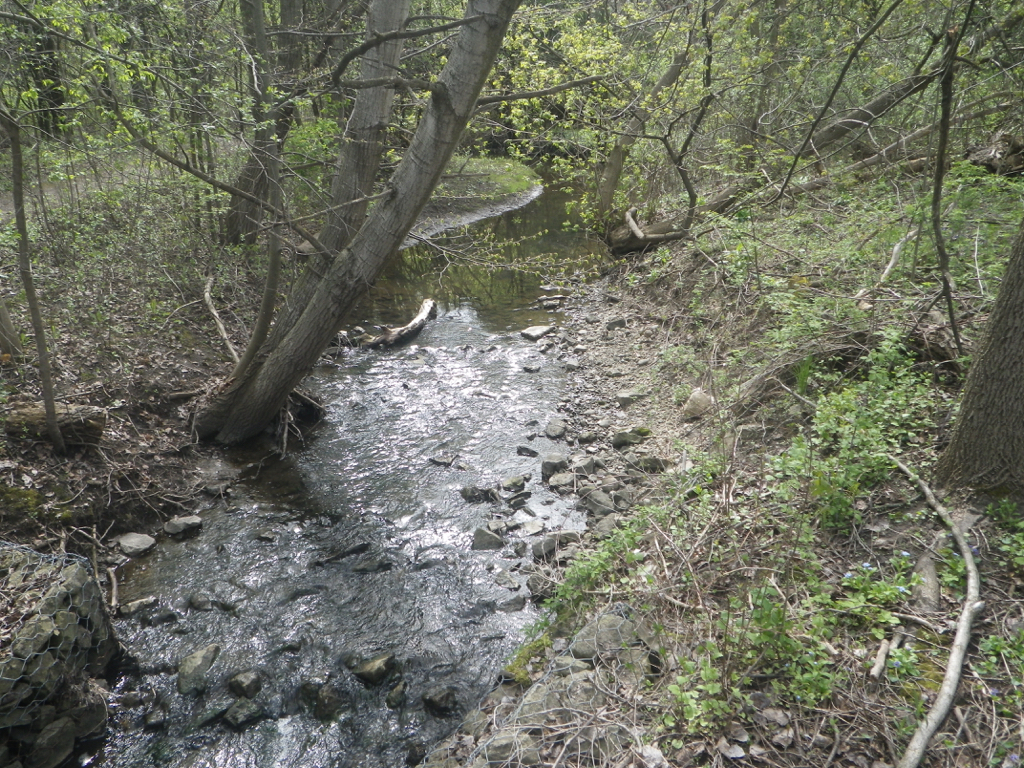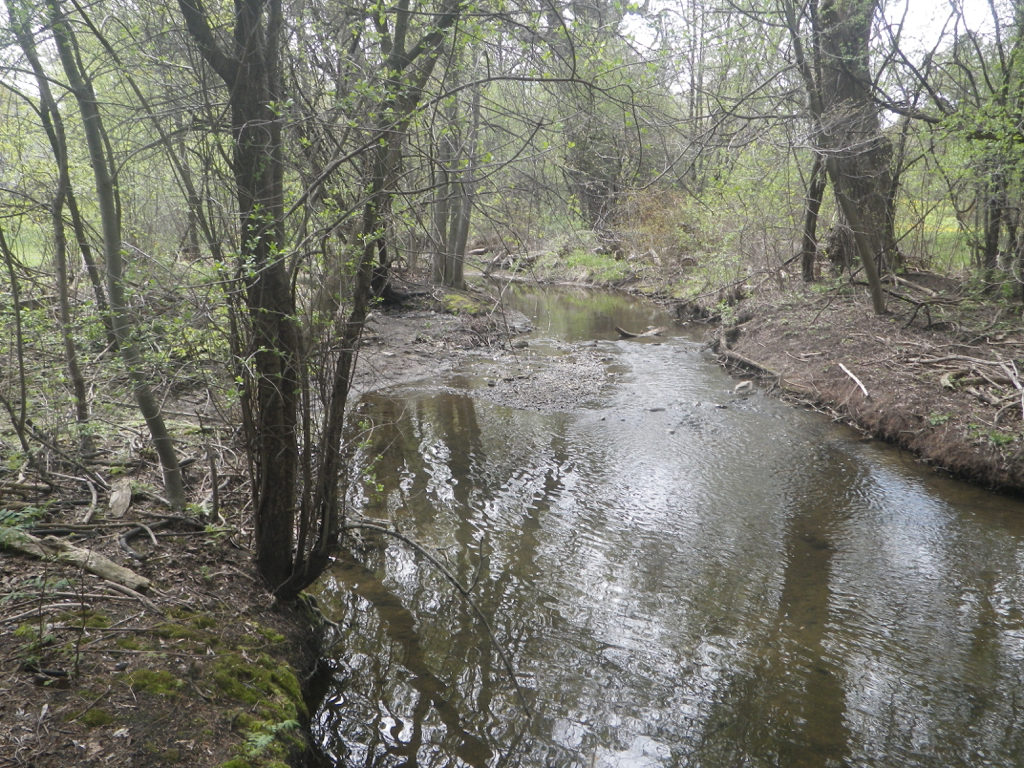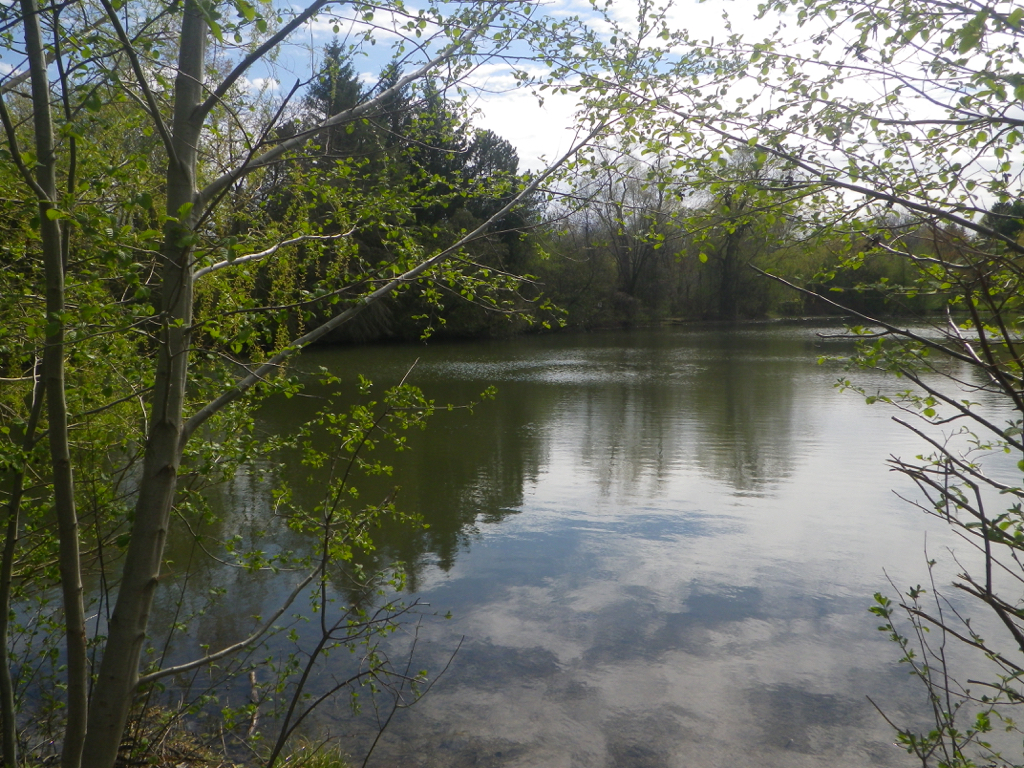Seems so long ago, the spring before coronavirus announced itself like a dreaded phone call in the dead of night. When hope and possibly and renewal were seasonal gifts, as dependable as a birthday card from a loved one.
In Becoming a Fly Fisher John Randolph observes that fly fishing is a paradigm that gives form and meaning to life. I agree. The contemplative recreation—not to mention writing about it—establishes a bond between practice and place. For anglers with deep pockets fly fishing is all about exotic locales in pursuit of exotic gamefish, requiring either fat wallets or generous expense accounts. In contrast, mine is a modest proposal, confined almost exclusively to an area less than two hours by car in any direction from my home in Waterloo, Ontario.
On this afternoon in early May I wanted to shift my piscatorial paradigm by reducing my parameters to within a few of blocks of my apartment. The idea of doing something different came to me over the winter on my daily walks throughout the Neighbourhood of Poets—so named because of streets honouring Shakespeare, Marlowe, Longfellow, Browning, Keats and Coleridge. I decided to celebrate the opening of trout season by casting a line in the Land of the Lawnmower.

With fly rod in hand and a couple of dependable flies (an isopod and pheasant tail nymph) in my pocket, I walked up the street bearing the name of the greatest angler of words in the English language. My goal was humble—toss a fly into a stream that meanders through the neighbourhood from a small reservoir in a small park. And see what, if anything, happened. I recalled the wisdom of Henry David Thoreau. While most readers associate the Concord mystic with Walden Pond, he was one of the first North American writers to recognize the importance of what are now called urban green spaces.
When most people contemplate the natural world, they think of vast remote tracks of wilderness or national and provincial parks. The municipal equivalent are designed primarily to accommodate sports and recreation with baseball diamonds, soccer pitches, tennis courts, swimming pools and playground equipment. Then there are the municipal gardens, home to manicured lawns, ornamental shrubs transplanted from distant lands and colourful annuals developed in greenhouses.
I appreciate these aesthetic amenities; they warm hearts, exercise imaginations and comfort souls. We need them to preserve our collective sanity. But my preference lies elsewhere, especially as urban green spaces retaining a whiff of the wild are as threatened as dinosaurs on the cusp the meteorite collision that changed everything 65 million years ago.
I am talking about the small shaggy unkempt ribbons of seemingly insignificant brush that accompanies and protects urban creeks and streams, as well as rough scruffy copses and groves that separate strip plazas, clusters of big-box stores, sprawling malls, pricey highrise condos and acres of paved parking lots. These untended sanctuaries are home to all manner of native flora (including white, pink and red trillium, jack-in-the-pulpit, trout lily and lily of the valley) and fauna. They protect rabbits, skunks, groundhogs, squirrels, tree frogs and raccoons, even fox, deer and coyotes—and many sundry creatures.
After all, the earth’s natural wealth accrues through both small donations and large capital investments. All deposits accumulate and yield ecological stability and viability.

It amazes me how much wildlife thrives under our noses and beyond our dark blinders—much of it nocturnal. My twenty-five year old son, Robertson, prefers to take his daily ninety-minute walks in the wee hours, usually between 1 and 2, because he craves ‘the solitude and serenity.’ He routinely happens upon all of the creatures listed above, and more, which adds to his delight. He has said repeatedly that our neighbourhood is ‘a playground for critters.’ (Late last winter we welcomed a great horned owl who liked to perch after dark in a nearby spruce and rouse us with a string of hoooot hoot hoots just before daylight peeked over the eastern skyline.)
The best way of protecting and preserving these small oases of biodiversity is to leave them alone, let them be, so they can go about their business unhindered, in accordance with their will and inclination.
Our neighbourhood abounds in small inconspicuous streams and creeks. They are reminders that, of all the natural resources North America has squandered since European contact, the most indecent, disgusting and regrettable is freshwater. These systems are so precious because life perishes without them. Freshwater has been monetized and monopolized by the engines of corporate capitalism which place short-term profit above long-term sustainability. The loss of freshwater is both genocide and suicide because it threatens every living thing on this fragile planet.
I was not expecting to catch any fish. I did not even know whether any species had the audacity to inhabit this tiny discreet creek. I could have phoned the conservation authority for information, but I did not want to spoil the potential for surprise that accompanies the unknown. After all, the venture was really about the fun of the unexpected.
From what I knew about reading water, it was possible, if not probable, that some miniature piscine species found this urban trickle hospitable. So instead of the limestone cliffs and pastoral farmland that provide picturesque backdrops for much of my fishing, I settled on backyard lawns and gardens, sheds and patio furniture, plastic wading pools and swing sets.
I wish I could report that my neighbourhood creek contained undiscovered, pint-sized speckled gems. But, alas, these are such stuff dreams are made on. Instead I caught a four-inch chub on my seven-and-half-foot bamboo rod crafted by a nameless artisan without pedigree sometime within the last half century.
I neither cast a graceful wet fly downstream in the classic manner, nor did I employ an efficient high-stick nymphing technique imported from Eastern Europe. I dapped, a technique remembered from childhood when I fished for wild brook trout in a northern ‘crick’ with a bamboo pole, black braided line and wiggly worms dug from the garden. But I need not apologize. This was pretty much how Dame Julianna Berners (had the mystery nun ever existed), not to mention Izaak Walton and his adopted son, Charles Cotton, fished English chalkstreams.

Because the stream is shielded by a scraggly band of mixed trees and vegetation along each bank, I shared the water with a pair of mallards. They did not welcome the intrusion—and let me know it. Still I enjoyed their company. Best of all, I saw a variety of birds, including purple and gold finches, yellow-breasted warblers, red-winged blackbirds and ruby-crowned kinglets, none of which are viewed from my ground-level apartment patio. I also saw familiar friends bluejays, black-capped chickadees and cardinals. A female goldfinch was so friendly she seemed eager to alight on my fly rod—just to say hello.
I had so much fun I decided to prospect another small local stream after supper. It always looked fishy to me. I approached the water at access points to limit my impact on bankside vegetation and made short casts with a soft-hackle wet fly tied by the late Ian Colin James. Cyclists, joggers, pleasure walkers, mothers pushing baby strollers and pairs of young lovers sauntered by on the trail. It resembled a scene from Casting in the Park with Rob, with a nod to Stephen Sondheim.
I did not expect to catch any trout. And I didn’t. Still I landed a half dozen chub in less than an hour. After the winter layoff on the heels of ending the previous year by casting streamers to Grand River smallmouth bass and Bighead River steelhead, it was nice to tone up my more nuanced trout hook-set muscle memory. And, best of all, no passport was required.
Since writing this story two short years ago I am distressed to report that our neighbourhood creek is now under attack—from the municipality and the University of Waterloo, across from which my apartment is located. The university is clearing fields and wetlands to construct buildings to accommodate ever-increasing enrollment. Even more troubling, the municipality is straightening out a naturally meandering creek located in a park, of all places. In the process it is transforming the creek into little more than a culvert. At the same time, it is cutting down bankside trees and removing vegetation that protected the creek and its inhabitants, replacing both with cut stone and lawn. It’s enough to make mild-mannered Henry pen an angry proclamation of Civil Disobedience.